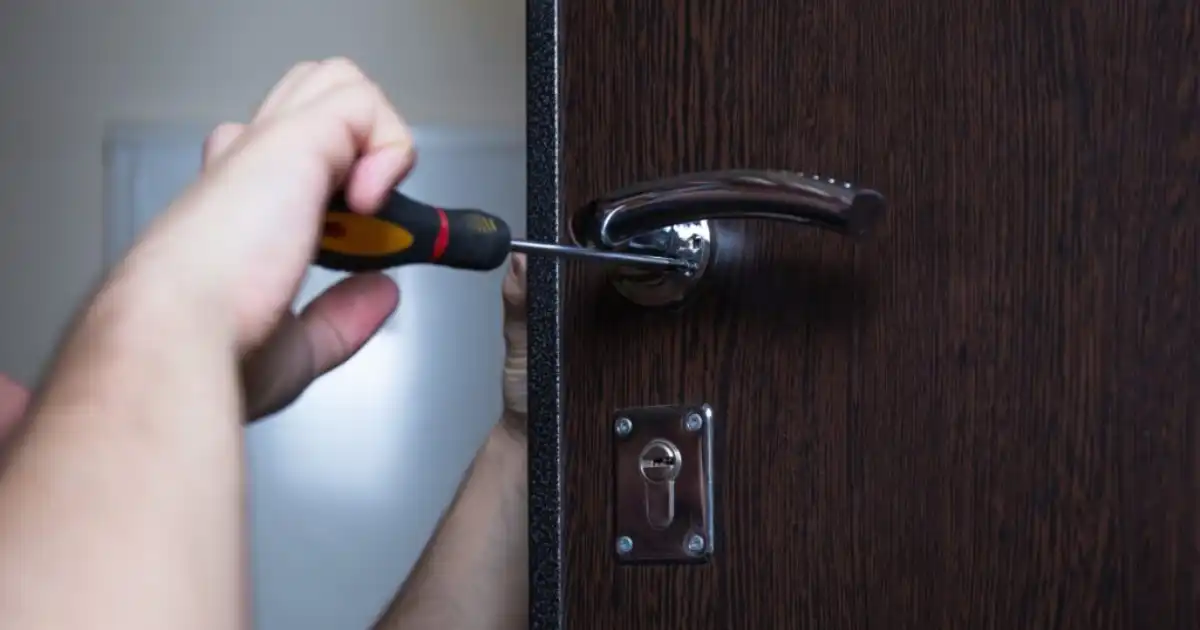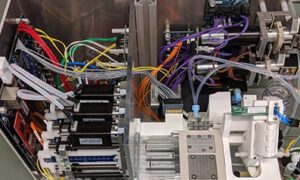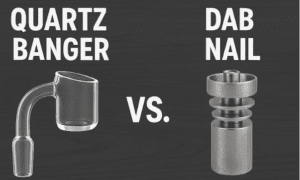It’s midnight in Ottawa, the winter wind howls, and your garage door suddenly jams—leaving your car trapped or your home vulnerable. Panic sets in.
Who do you call? How do you fix it without risking injury or costly damage? Emergency garage door repairs demand swift, expert solutions, and knowing what to do in those critical moments can save you time, money, and stress.
Whether it’s a snapped spring, a misaligned track, or a malfunctioning opener, these crises rarely happen at convenient times. That’s where a skilled locksmith Ottawa specialist becomes your unsung hero, equipped to handle high-stakes malfunctions with precision.
While some may hesitate due to concerns like garage door repair cost Toronto, delaying repairs often leads to pricier consequences—think broken mechanisms, security risks, or even a door that won’t budge.
This guide unveils five vital tips to navigate emergencies like a pro, from temporary fixes to choosing the right locksmith Ottawa service. Don’t let a faulty garage door disrupt your life—find reliable garage door repair services near me, arm yourself with knowledge, and act decisively when it matters most.
1. Identify the Problem: Diagnose Before You Act
Why Diagnosis Matters
Not every garage door repair requires a professional. Sometimes, the issue is minor and fixable.
Before panicking, assess the situation:
-
Is the door not opening at all?
-
Is it making strange noises?
-
Is it stuck halfway?
Common Culprits
-
Broken Springs
A snapped spring is dangerous; never attempt a DIY fix.
-
Faulty Opener
Check batteries, power supply, and sensors.
-
Misaligned Tracks
Look for bends or obstructions.
What to Do Next
If the problem is electrical (opener issues), try resetting the system. For mechanical failures (springs, cables), call a locksmith Ottawa specialist immediately.
2. Secure Your Garage Door Manually
When to Use the Emergency Release
Most garage doors have a manual release cord (usually red). Pulling this disengages the opener, allowing you to lift the door by hand.
Step-by-Step Manual Operation
-
Locate the release handle (hanging from the opener rail).
-
Pull down firmly to disengage the motor.
-
Lift the door slowly—beware of broken springs (they make doors heavy).
Safety First!
-
If the door is too heavy, do not force it—this indicates a broken spring.
-
Keep children and pets away during manual operation.
When to Call a Pro
If manual operation fails, contact a garage door repair expert in Ottawa immediately.
3. Temporary Fixes for a Stuck Garage Door
Lubricate Moving Parts
A squeaky or stuck door might just need lubrication.
Use a silicone-based lubricant (not WD-40) on:
-
Rollers
-
Hinges
-
Tracks
Check for Obstructions
Debris in the tracks can jam the door.
Clear out:
-
Leaves
-
Pebbles
-
Ice (in winter)
Realign Sensors
If the door reverses immediately, the safety sensors may be misaligned. Adjust them so they face each other properly.
When DIY Isn’t Enough
If temporary fixes don’t work, seek professional garage door repair services in Ottawa.
4. Reinforce Security If the Door Won’t Close
Why It’s Urgent
An open garage door is an invitation for burglars.
If your door won’t shut:
Quick Security Measures
-
Use a C-Clamp
Secure the door track to prevent lifting.
-
Install a Temporary Lock
A padlock through the track can deter intruders.
-
Block the Door
Place heavy objects inside to prevent forced entry.
Call a Locksmith Ottawa Expert
For permanent security solutions, a garage door repair specialist can reinforce locks and mechanisms.
5. Know When to Call a Professional
Signs You Need Expert Help
-
Snapped Springs or Cables
High-tension parts require specialized tools.
-
Bent Tracks
Misalignment needs professional adjustment.
-
Motor Failure
Electrical issues should be handled by a technician.
Benefits of Hiring a Pro
-
Safety
Avoid injuries from high-tension components.
-
Long-Term Fixes
DIY patches may fail again quickly.
-
Warranty Protection
Many repairs require certified technicians to maintain warranties.
Choosing the Right Locksmith Ottawa Service
-
24/7 Availability
Emergencies don’t wait.
-
Licensed & Insured
Ensures quality work.
-
Local Reviews
Check testimonials for reliability.
Conclusion
A garage door repair emergency can strike at any time—whether it’s a mechanical failure, electrical glitch, or security risk. By following these 5 essential tips, you can mitigate damage, enhance safety, and decide when to call a locksmith Ottawa professional.
Don’t wait for disaster—bookmark this guide and save the contact of a trusted garage door repair expert today. Being prepared could save you from a costly and stressful ordeal tomorrow.
A garage door repair emergency can disrupt your day and compromise your home’s security. By following these 5 essential tips, you can quickly assess the problem, apply temporary fixes, and determine when to call a professional locksmith Ottawa service. Whether it’s a broken spring, a stuck door, or a faulty opener, knowing how to react can save you time, money, and stress.
Don’t wait for an emergency to strike—be proactive. Keep your garage door well-maintained, have a trusted garage door repair expert on speed dial, and ensure your family’s safety. A small investment in prevention today can prevent a major headache tomorrow. Stay prepared, stay secure!
FAQs about Garage Door Repair Locksmith
Can a locksmith fix a garage door lock?
Yes, a locksmith can typically repair or replace a garage door lock, especially if the issue involves the locking mechanism itself. Garage door locks can fail due to wear and tear, rust, misalignment, or broken keys stuck inside.
A professional locksmith has the tools and expertise to extract broken keys, rekey locks, replace damaged cylinders, or install new locking systems.
However, if the problem extends beyond the lock—such as issues with the garage door opener, torsion springs, or track alignment—you may need a garage door technician instead.
Locksmiths are ideal for security-related concerns, like upgrading locks or addressing break-in damage, but they may not handle mechanical garage door components.
How do you fix a garage door after emergency release?
After disengaging the emergency release, the garage door must be properly reconnected to the opener to resume automatic operation. First, ensure the door is fully closed to avoid misalignment.
Locate the emergency release handle (usually a red cord hanging from the opener rail) and pull it firmly toward the garage door motor to reattach the trolley. Once reconnected, manually lift the door halfway and release it to check if it stays in place—this confirms the opener is engaged.
If the door doesn’t move smoothly, inspect the tracks for obstructions or misalignment. Additionally, test the remote and wall controls to verify the opener is functioning. If the door still doesn’t operate correctly, the issue may lie with the opener’s settings, sensors, or motor, requiring a reset or professional service.
How do you emergency shut a garage door?
If you need to close your garage door quickly due to a malfunction or power outage, use the emergency release mechanism. Locate the red emergency release cord or handle near the garage door opener carriage. Pulling this cord disengages the door from the automatic opener, allowing you to operate it manually.
Carefully lift or lower the door by hand, ensuring it moves evenly along the tracks to prevent jamming. If the door is difficult to move, it may indicate broken springs or track damage, which can make the door dangerously heavy.
In such cases, avoid forcing it and seek professional assistance. For added security, consider locking the door manually after closing it, especially if the opener is non-functional.
How do you lift a broken garage door?
Lifting a broken garage door requires caution, as damaged doors can be unstable or excessively heavy. First, disconnect the door from the opener by pulling the emergency release cord.
If the torsion or extension springs are broken, the door may be extremely difficult to lift—do not attempt to force it, as this can cause injury.
If the door is movable, lift it slowly with assistance, keeping it aligned in the tracks to prevent further damage. Use locking pliers or a clamp to secure the door in place once lifted.
However, if the door is sagging, misaligned, or has snapped cables, it’s safest to avoid handling it and call a professional garage door repair service. Attempting DIY repairs on high-tension components like springs can be hazardous.
How do I open my garage door?
To open your garage door, use the remote control, wall-mounted button, or a smart home app if your system supports Wi-Fi connectivity.
Press the button, and the opener should activate, lifting the door smoothly. If the door doesn’t respond, check for common issues like dead remote batteries, tripped circuit breakers, or misaligned safety sensors near the floor. If the power is out, manually open the door by pulling the emergency release cord and lifting it by hand—be cautious, as some doors can be heavy.
If the door still won’t budge, inspect for obstructions in the tracks, broken springs, or damaged rollers. Persistent issues may require professional troubleshooting to diagnose electrical or mechanical failures in the opener system.
Meta Description
Locksmiths can repair or replace broken garage door locks, rekey mechanisms, and extract stuck keys. Call a pro for secure fixes.

































